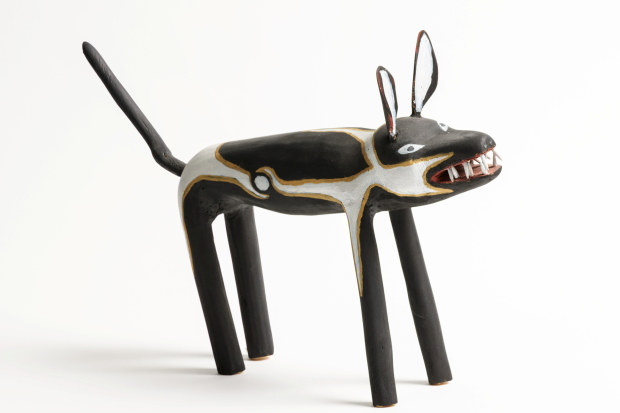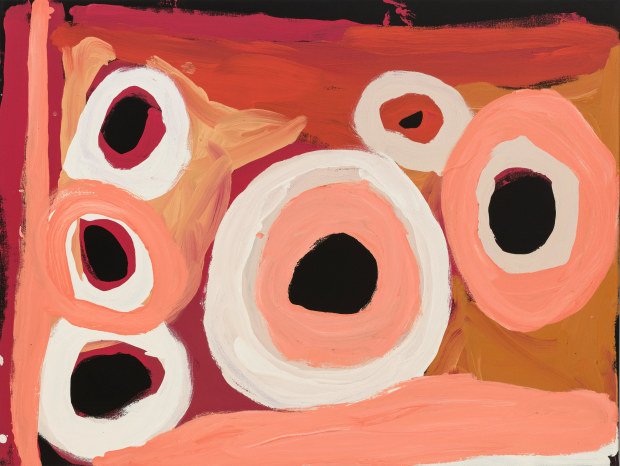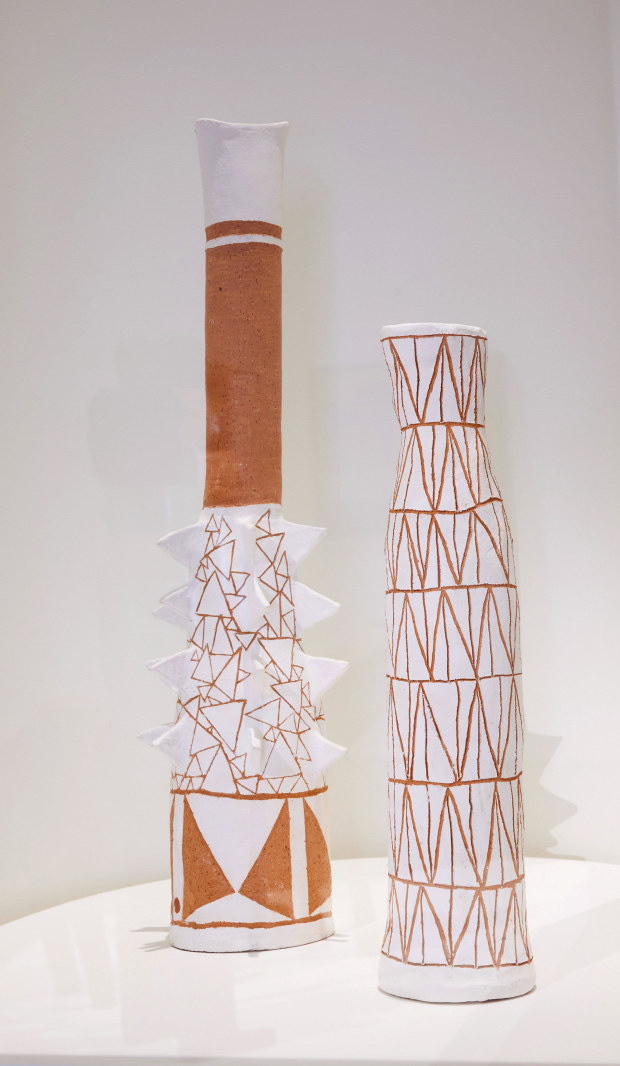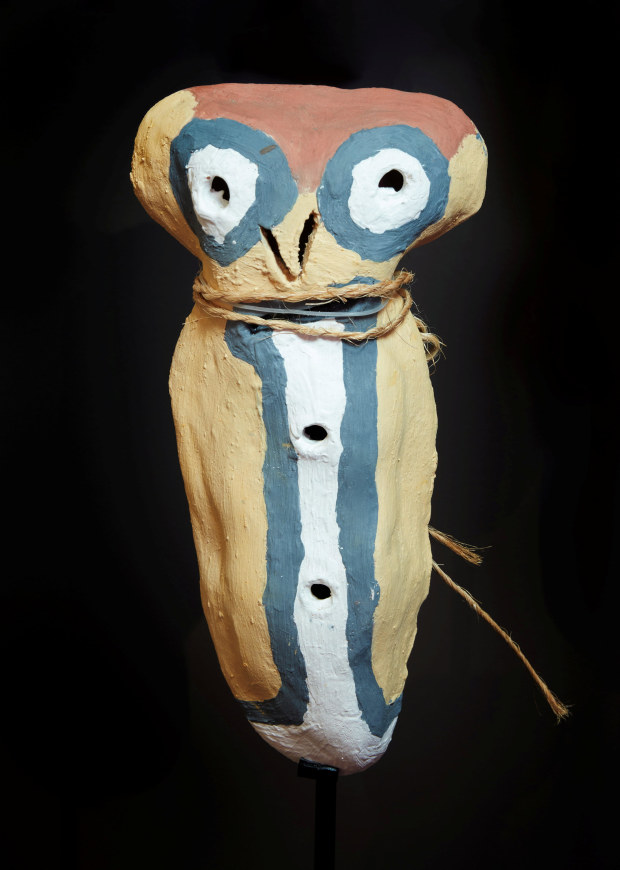The Horton bequest is the largest-ever gift of art to the gallery’s Indigenous collection, which previously numbered 2412 works, according to deputy director Maud Page.
“[The Hortons] picked works because they loved them, and lucky for us they loved works that were good,” Ms Page said.

Bevan Namponan, “Ku’ (dog)“, natural pigments with binders on milkwood.
“They were getting a lot of advice and had a lot of interaction with [Indigenous] communities. They were active listeners and became knowledgeable, so what they picked was the best.
“We’ve got some really exceptional works in this collection.”
The bequest is as yet unvalued by the gallery, but Ms Page said it would be “of incredible monetary value”.
Mr Horton said he had long been troubled by the plight of many Indigenous Australians who he and Dame Rosie encountered while touring artist-run art centres in remote communities such as Ramingining and Maningrida.
“We’re so proud of [the gift], and we hope it will help change attitudes,” Mr Horton told AFR Weekend.

Katjarra Butler, “Ngamurru/Katjarra”, 2020, acrylic on canvas.
The Horton gift includes paintings, weavings and sculptures that were personally selected by the couple over a 23-year period, often while travelling on art tours organised by the Art Gallery of NSW.
Significantly, the gift includes several paintings by the great Sally Gabori, the artist to whom the Fondation Cartier pour l’art contemporain in Paris devoted a retrospective exhibition in 2022.
Gabori’s highest auction price was set in May last year when Big River at Thundi sold for almost $290,000 through Sotheby’s New York.
Other prominent artists represented in the Horton gift include Angelina George and the Joshua sisters.
The gift introduces new artists to the gallery’s collection, including Girramay artists Abe Muriata and Emily Murray, and Djinaŋ/Marung artist Jeremiah Bonson.

Naomi Hobson, “Iwayi #3”, 2019 (left) and “Malkarti Pole (dancing pole)“, 2018 (right), terracotta clay pole with white underglaze.
The Hortons took advice from Indigenous specialist art galleries such as Short Street Gallery in Broome, Alcaston Gallery in Melbourne, Karen Brown Fine Art Gallery in Darwin and Suzanne O’Connell Gallery on the Gold Coast.
They met and befriended the prominent Indigenous art collectors Dr Colin and Elizabeth Laverty of Sydney, who became mentors.
It is hard to imagine how the collection fitted into the luxury home in Sanctuary Cove, Queensland, where Mr Horton lives when he is in Australia (in New Zealand he lives in Auckland). And he admits he won’t mind the extra breathing space now that only about 30 items of art are left.
His collecting days were over, Mr Horton said. With one exception.
“We’ll buy one painting a year for the children’s hospital in Brisbane, because there’s lots of Aboriginal children there. They all love the Aboriginal paintings,” he said.

Sally Murray, “Bagu”, 2010, ceramic with glaze.
Dame Rosie was a well-known New Zealand philanthropist who raised funds for numerous charities including those benefiting children and cancer patients.
Mr Horton is the former proprietor of New Zealand’s largest newspaper company. The Horton family were significant shareholders in Wilson and Horton, which owned The New Zealand Herald for 120 years before selling out in the mid-1990s.
About 30 works from the Horton gift are on view in the Yiribana Gallery in Naala Badu, the Art Gallery of NSW’s new building.
Mr Horton himself needs no one to tell him how valuable his collection is.
“It shouldn’t be in private hands – too important,” he said. “We bought it because we believed in the people we were dealing with and what they were doing and, because they were Aboriginals, they deserved a far better outcome for their lives and an appreciation of what they do.”
